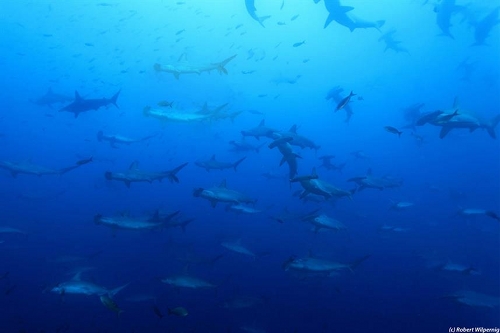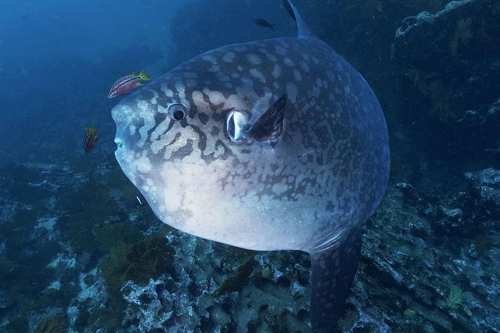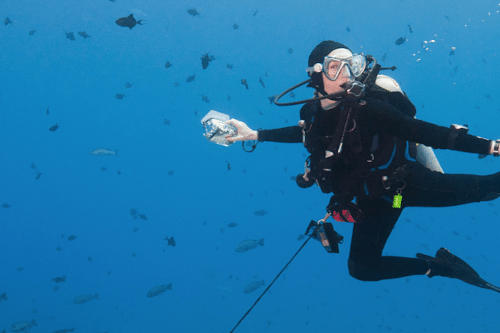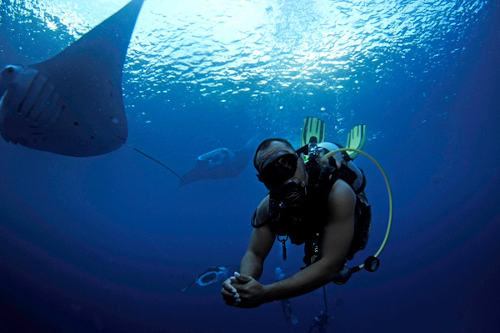Awesome Drift Dive Destinations

For many of our fellow dive buddies, there’s nothing like a dive with wild current. Coral heads flying by, schools of fish and critters all doing their best to fight the flow and find shelter from the current in a coral head. Drift diving is one of the most exhilarating types of diving in the underwater world and there are some great dive destinations where you can jump in and enjoy the ride. No matter where you decide to experience drift dives, remember, Dive Safe! Whether you are an expert or a novice drift diver, safety comes first. Here are some rules to follow for a safe and fun drift dive:
– make sure you carry and use an SMB;
– streamline your gear to avoid damaging the reef;
– be properly weighted and neutrally buoyant;
– concentrate on your surroundings and changing conditions;
– do not fight current, work with it not against it.
Cozumel, Mexico
When planning a dive trip to Cozumel, you should prepare yourself for some great drift dives. Cozumel is a renowned destination for divers with a whole lot to offer. Cozumel is known for drift diving as well as other amazing reef dive sites. With its combination of great visibility, generally calm surface conditions, and strong currents, divers can experience drift diving at its best. Whether you’re an experienced diver, a beginner, looking to add drift diving to your skill set. Some amazing drift dives to try when diving Cozumel include Santa Rosa Wall, Pun ta Tunich, Palancar Reef, and Columbia Wall.
Santa Rosa Wall - Divers come back from Cozumel unable to stop talking about the Santa Rosa Wall, and for good reason. It is one of the deeper dive sites you will do when diving Cozumel, it is worth getting down there to see the fantastic coral formations, barrel sponges, and the incredible marine life. You can see sea turtles, huge groupers, and majestic eagle rays gliding through the waters here.
Punta Tunich is another great site. With coral ridges rising up from the sandy base at 70 feet, you’ll see schools of grunt and snapper, as well as large sea fans, bright, beautiful sponges and intricate corals.
Planacar Reef offers three miles of reef and is suitable even for the beginning scuba diver. If you are diving Cozumel as a newly qualified diver and want an experience that lets you use the skills you learned, Palancar reef is easy and rewarding, with its hugely diverse sea life population and coral formations. The gentle currents and temperate water allow you to drift comfortably as you enjoy the surrounding world of colourful fish, sponges, coral and sea fans. This is also a really good dive site if you are an underwater photographer.

Galapagos Islands, Ecuador
The Galapagos Islands are considered one of the best dive experiences in the world, thanks to the large marine critters and unique wildlife found at these special islands. There is no shortage of currents at the Galapagos Islands, which attract pelagic species to top sites such as Wolf and Darwin Islands. Jump in, go with the flow and enjoy the schools of hammerheads and rays that pass you by.
The Cabo Douglas dive site is located on the North West side of Fernandina Island. One of the central Galapagos islands, Fernandina has an active shield volcano 'La Cumbre', which has been subject to eruptions within the last ten years. Fernandina is one of the most unspoiled environments in the world and one of the few places in the Galapagos which has never suffered any kind of invasive species. Many of the animals on Fernandina exist only on the Galapagos Islands. Marine iguanas have also evolved to survive on these islands making them completely distinctive to the region. The island is also home to a great number of sea lions, turtles, pelicans and Galapagos penguins. The dive sites at Cabo Douglas don’t cover a very large area but offer the opportunity to see so many rare species that it is thrilling diving.
Red Sea, Egypt
Elphinstone Reef in Southern Egypt is a long sausage-shaped reef that sits in the open ocean and is perfect for drift diving. The walls of the reef drop thousands of meters to the inky depths and are covered in hard and soft corals and filled with marine critters. The currents will take you along the walls at ripping speeds of up to 2 knots, with no diving effort needed at all on the right day. Diving Elphinstone is definitely one to add to the bucket list for experienced divers looking for adventurous dives. The ‘Simply the Best’ itinerary offered by Emperor Divers includes the Elphinstone Reef. This cruise offers some of the best Red Sea drift diving sites, including Elphinstone Reef, Daedalus and the Brothers. Divers enjoy the colourful corals and critters and the occasional passing oceanic whitetip shark.

Palau, Micronesia
Drift diving in Palau is often compared to hang gliding. Instead of riding winds, you are riding the marine currents maintaining neutral buoyancy and perfect trim. Many of the techniques of drift diving were developed in Palau, including the reef hook. Using a reef hook is the bit different than a typical drift dive. The waters of Micronesia are known for the abundant marine life and amazing currents. The dive spots of Palau, like German Channel, Ulong Channel and Blue Corner will wow you and have you flying through the sites full of colorful soft corals, turtles, sharks, manta rays, and tons of other fish.

Maldives, Indian Ocean
The Maldives offers plenty of drift dives to those lucky enough to visit. Teeming with life, many species of sharks are commonly seen as well as sea turtles, schools of fish, manta rays, and whale sharks. Add Lhaviyani Atoll, Noonoo Atoll, and South Ari Atoll to the top of your dive list here. Most of the liveaboards in the Maldives offers itineraries that include some fantastic drift diving.